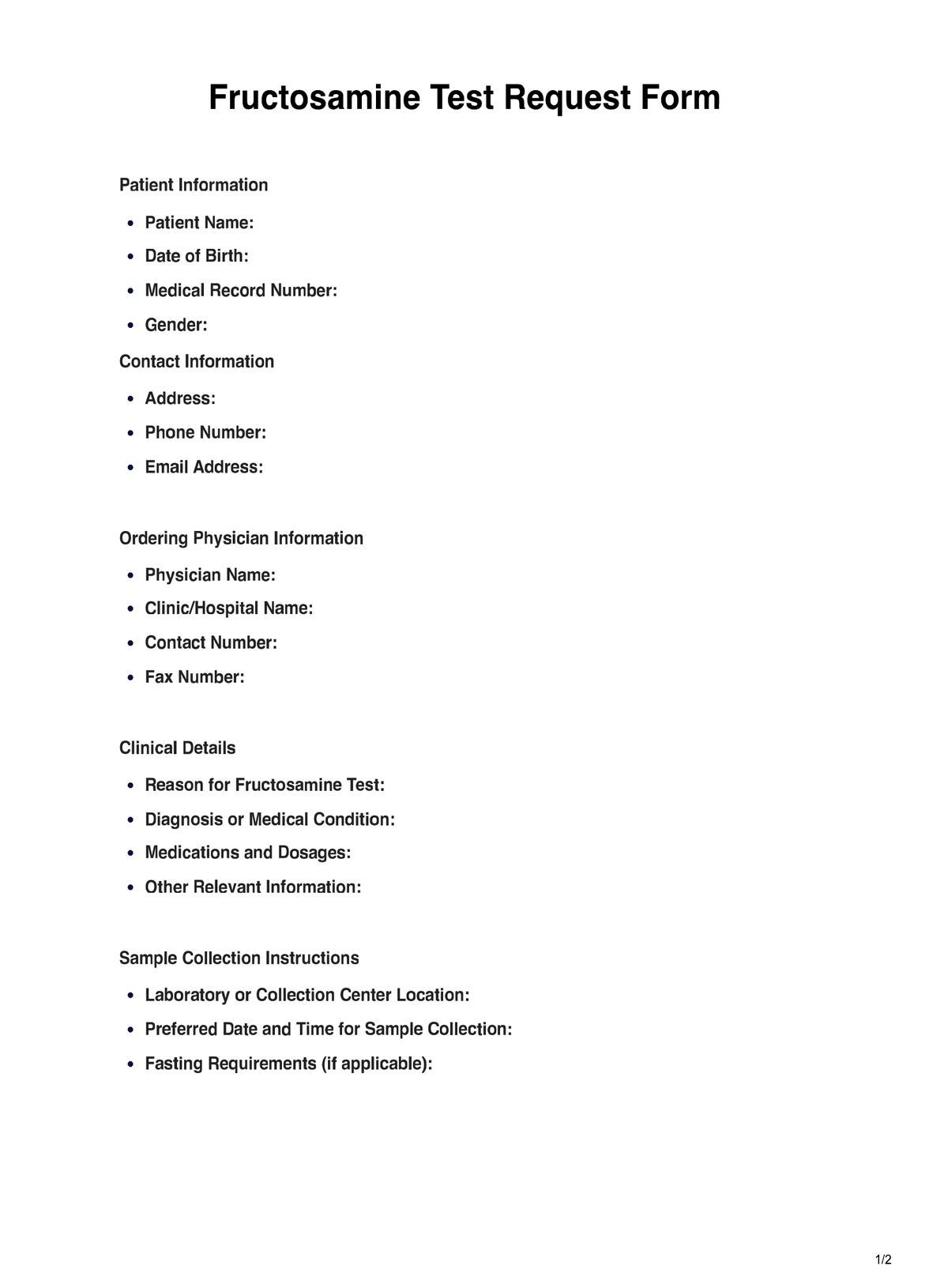Fructosamine Tests are typically requested by healthcare providers, including doctors, endocrinologists, and diabetes specialists, to monitor the blood sugar control of patients with diabetes.

Fructosamine
Get accurate Fructosamine test results for diabetes management. Understand its significance and interpretation�??your health matters.
Use Template
Fructosamine Template
Commonly asked questions
Fructosamine Tests are used when a shorter-term assessment of blood sugar control is needed, such as during pregnancy, when adjusting medications, or for patients with frequent glucose fluctuations.
A Fructosamine Test involves drawing a blood sample, which is sent to a laboratory for analysis. It measures the fructosamine level in the blood, reflecting average blood sugar control over the past 2-3 weeks.
EHR and practice management software
Get started for free
*No credit card required
Free
$0/usd
Unlimited clients
Telehealth
1GB of storage
Client portal text
Automated billing and online payments











